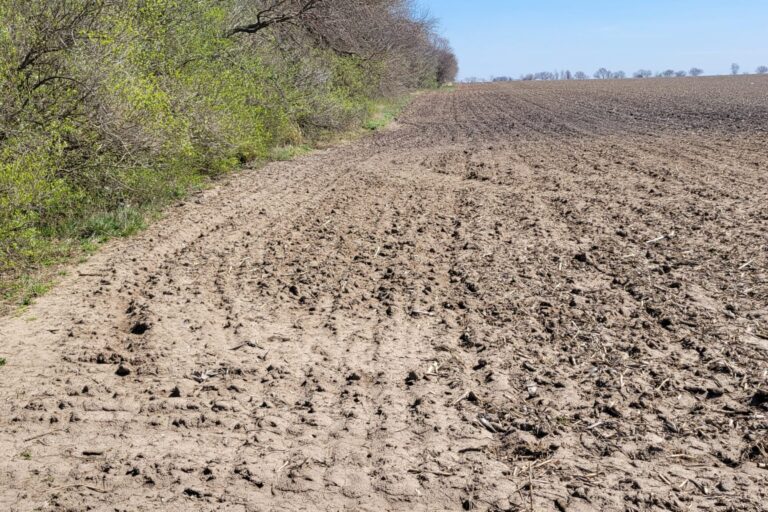A soil scientist at the University of Illinois Urbana campus is reaching out to landowners and farmers, as he prepares to take soil samples at locations where samples were taken years ago across the state.
Professor Andrew Margenot plans to compare the new soil samples with past samples stored at the U of I Crop Science Research and Education Center, better known as the South Farms. He says more than 5,000 samples were taken at 453 sites around the state, in almost every one of Illinois’ 102 counties. The samples date back as far as the 1860s and as recently as the 1990s, although Margenot says most of them were taken between 1920 and 1960.
The soil samples had been stored in various places on the University of Illinois Urbana campus over the years, often in basements and underground tunnels, and usually in a spot near the Main Quad. Margenot says colleagues in the university’s College of Agricultural, Consumer and Environmental Sciences (ACES) were vaguely aware of them, but apparently no one was actively working or keeping track of them in August of 2018. That was when, acting on a tip about ‘jars of dirt’ on campus, he found the soil sample collection in a deteriorating university barn slated for demolition.
“I couldn’t really sleep that night, and I began drafting grants that very same night”, Margenot said, “because it was terribly exciting. It was a resource that I realized we’re lucky that someone held on to. This is the oldest archive in the world, and the largest extant. So spatially, it’s an enormous coverage. This is it. This is the best we have in the entire world.”
Using old soil samples for new research
Since then, the soil samples have been moved to a more secure barn on the South Farms. And with funding from the College of ACES and the Illinois Nutrient Research and Education Council, Margenot has embarked on a multi-year project to take new soil samples in the areas where the old samples were collected. He says such a comparison could reveal how the soil used for growing crops has been changed by farming techniques over the years.
Originally, researchers used the old soil samples to map Illinois soil types. Margenot says soil samples for similar projects in other states have also been preserved, with many stored at a Lincoln, Nebraska facility by the U.S. Department of Agriculture’s Natural Resources and Conservation Service. But he says most of those collection are from more recent years, and nowhere near as old as the UIUC’s collection.
“For example, we can better map the natural occurrence of nutrients in a subsoil across the state,” said Margenot. “And based on that, there are direct implications for agronomic recommendations on things like phosphorus or potassium fertilization.”
Phosphorus and potassium are common nutrients found in fertilizers.
Margenot says comparing soil samples from different years could also provide information on changes in carbon levels in soil over the years.
“We hear a lot about carbon markets, carbon credits,” said Margenot. “And one way to know with high certainty how carbon in soil has changed over the past 100 years, is to have an archive of samples going back that far.”
Plans for more sampling
Margenot is teaming up with the Illinois Farm Bureau, local soil and water conservation districts, and the university’s alumni network to reach out to current owners of sites where soil samples were previously taken. He’s seeking permission to re-sample these sites. So far, he’s managed to contact owners or farmers at about 90 of the 453 sampling locations and has re-sampled approximately 32 sites. However, some sites can’t be re-sampled because they’ve been developed and built over, particularly in the St. Louis Metro East and Chicago suburbs.
Margenot is planning to collect new soil samples from some sites this spring, before the planting season, and more in the fall, after the harvest season. He says he’s grateful to those landowners and farmers who have agreed to let him re-sample on their land. Many of them have reached out to invite him to come take new soil samples on their land.
Margenot says anyone seeking information about the project, and possibly allowing him to come take samples at their farmland, can go to the Illinois Soil Archive web page on his section of the UIUC website.

